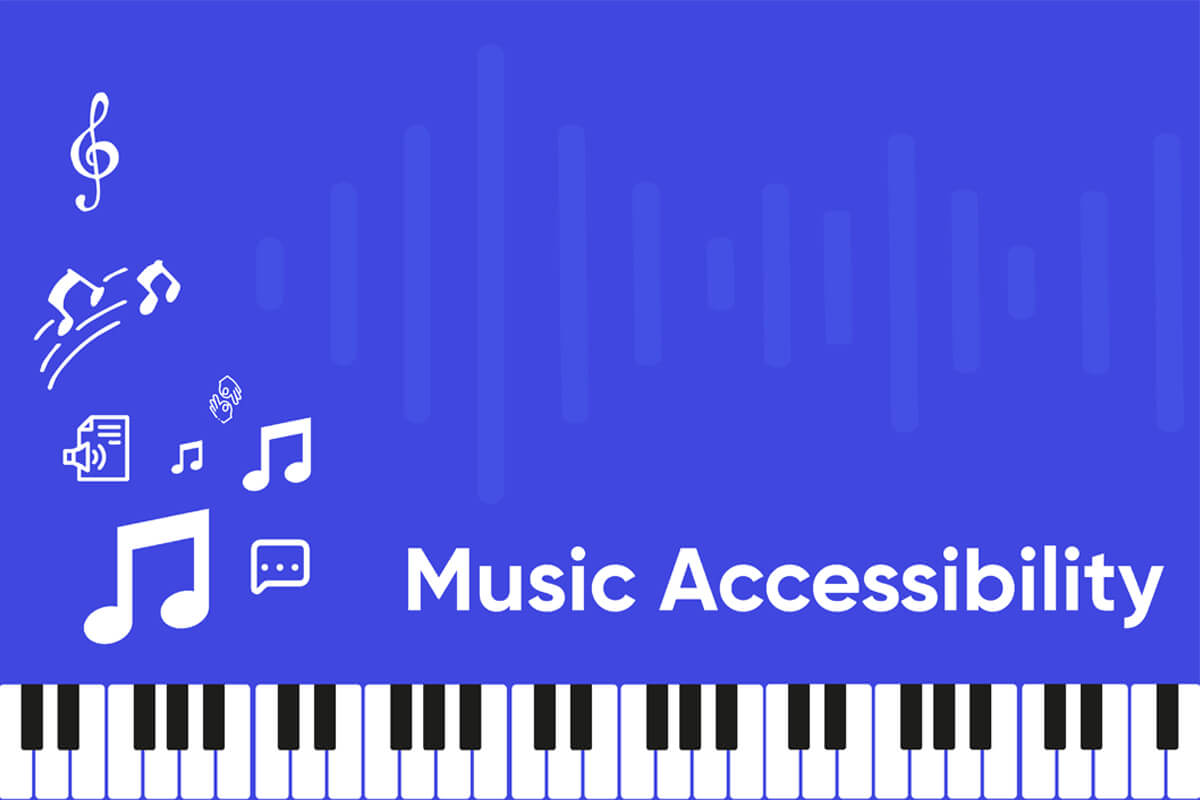Music is one of the oldest and most universal forms of human expression. It has the power to communicate, inspire, and connect us with others across time and space. It can also enhance our well-being, health, and learning in various ways. However, due to different barriers and challenges, only some have the same access and opportunity to enjoy and create music. This is why music accessibility is an important issue that deserves our attention and action.
Table of Contents
What is music accessibility?
Music accessibility is the idea that music should be accessible to everyone, regardless of their abilities, disabilities, or special needs. It can refer to both the creation and consumption of music, as well as the education and participation in musical activities.
How you can make your music more accessible
1. Providing captions, transcripts, and sign language interpretation
This can help people who are deaf, hard of hearing, blind, have low vision, or have other impairments that affect their access to media content. Captions and transcripts can also benefit people learning a new language or having difficulty with reading or listening comprehension. The description of visual information can also enrich the experience of people who can see by highlighting details or emotions that may not be obvious. Sign language interpretation can also foster inclusion and diversity by respecting the linguistic and cultural identity of deaf people.
2. Developing music that is compatible with assistive technologies
Assistive Technology (AT) includes any product, piece of equipment, or item used to maintain, improve, or increase the functional ability of people with disabilities.
Here are some examples of AT: Screen readers, voice control, switch control, eye tracking, and adaptive keyboards.
They can help people with difficulties using conventional interfaces such as a mouse, keyboard, or touch screen. Assistive technologies can enable people to access music applications and programs that can facilitate their musical expression, creativity, and learning.
For example, screen readers can help blind people navigate through menus and options; voice control can help people who have limited hand movement or coordination; switch control can help people who have limited mobility or muscle control; eye tracking can help people who have paralysis or severe motor impairments; and adaptive keyboards can help people who have different hand sizes or shapes.
3. Designing accessible musical instruments
It can help people who have physical impairments or mobility issues that prevent them from playing traditional instruments. Adaptable instruments and controllers can allow people to adjust the size, shape, position, or orientation of the device according to their needs and preferences. Customizable instruments and controllers can allow people to modify the sound, pitch, volume, or timbre of the device according to their musical goals and tastes. Ergonomic instruments and controllers can allow people to play the device comfortably and safely without causing pain or injury.
4. Creating inclusive music education programs
Inclusive music education programs and resources can ensure everyone has equal access and opportunity to learn music, regardless of their background or ability. Diverse music education programs and resources can expose students to various musical genres, cultures, traditions, and perspectives that can broaden their horizons and appreciation of music. Flexible music education programs and resources can accommodate the individual needs and interests of each student by allowing them to choose their own pace, level, mode, or content of learning.
5. Supporting accessible music communities
Welcoming music communities and events can create a sense of belonging and acceptance for everyone who wants to join or attend. Respectful music communities and events can acknowledge and celebrate each member’s or participant’s diversity and uniqueness. Accessible music communities and events can provide physical access (such as ramps, elevators, or accessible seating), communication access (such as sign language interpreters or assistive listening devices), or financial access (such as free or low-cost tickets) for people who need them.
Why is music accessibility important?
Music accessibility is important because it has many benefits for individuals and society.
Here are some of the benefits of music accessibility:
- Enhances our well-being and health.
- Improves our mood by reducing stress, anxiety, depression, anger, or boredom.
- Boosts our immune system by increasing antibodies and reducing cortisol levels.
- Stimulates our brain by improving memory, attention span, problem-solving skills, and creativity.
Music is for everyone, and so is assistive technology! Whether you want to listen, play, or learn music, you can find the right tools and support to make it happen. Don’t let anything stop you from enjoying and creating music. Feel free to contact AEL Data if you would like assistance with your accessibility issues or a review of the accessibility of your website and unlock its potential.



